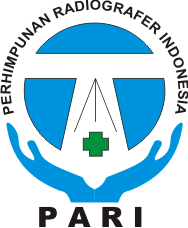SOSIO EKONOMI DAN SKOR KERAGAMAN MAKANAN TERHADAP KEJADIAN STUNTING
Abstract
Stunting disebabkan multi faktor baik faktor internal (genetik, infeksi dll) maupun eksternal (sosio ekonomi, asupan makan, pengasuhan maupun budaya). Tujuan penelitian ini adalah untuk mengetahui hubungan sosio ekonomi dan keragaman makanan terhadap stunting pada balita di Wilayah Kerja Puskesmas Sungai Puar Kabupaten Batang Hari provinsi Jambi. Jenis penelitian ini menggunakan metode deskriptif analitik dengan cross sectional. Instrument sosioekonomi dengan menggunakan kuesioner dan skor keragaman makanan dengan food recall 24 jam dan Diet Diversity Score (DDS). Analisis data menggunakan chi-square. Hasil penelitian didapatkan bahwa angka kejadian stunting sebanyak 30,9%. Hasil analisis sosio ekonomi didapatkan sebagian besar pendidikan ibu yang ayah rendah dengan pendapatan terbanyak dibawah UMR. Terdapat hubungan yang signifikan antara sosioekonomi (pendidikan orang tua dan pendapatan yang rendah) dengan kejadian stunting dan juga terdapat hubungan signifikan skore keragaman makanan dengan kejadian stunting. Saran untuk meningkatkan program pencegahan stunting terutama mengenai peningkatan pengetahuan dan pendapatan serta pemberian berbagai jenis makanan kepada balita.
Keywords
Full Text:
PDFReferences
Ayelign, A., & Zerfu, T. (2021). Household, dietary and healthcare factors predicting childhood stunting in Ethiopia. Heliyon, 7(4), e06733. https://doi.org/10.1016/j.heliyon.2021.e06733
Babar, N. F., Muzaffar, R., Khan, M. A., & Imdad, S. (2010). Impact of socioeconomic factors on nutritional status in primary school children. Journal of Ayub Medical College, Abbottabad : JAMC, 22(4), 15–18.
Benton D. (2010). The influence of dietary status on the cognitive performance of children. Molecular nutrition & food research, 54(4), 457–470. https://doi.org/10.1002/mnfr.200900158
Black RE, Victora CG, Walker SP et al. (2013) Maternal and child undernutrition and overweight in low-income and middle-income countries. Lancet 382, 427–451 https://doi.org/10.1016/S0140-6736(13)60937-X
Bridgman, G., & von Fintel, D. (2022). Stunting, double orphanhood and unequal access to public services in democratic South Africa. Economics and human biology, 44, 101076. https://doi.org/10.1016/j.ehb.2021.101076
Chowdhury, T. R., Chakrabarty, S., Rakib, M., Afrin, S., Saltmarsh, S., & Winn, S. (2020). Factors associated with stunting and wasting in children under 2 years in Bangladesh. Heliyon, 6(9), e04849. https://doi.org/10.1016/j.heliyon.2020.e04849
Fooken, J., & Vo, L. K. (2021). Exploring the macroeconomic and socioeconomic determinants of simultaneous over and undernutrition in Asia: An analysis of stunted child - overweight mother households. Social science & medicine (1982), 269, 113570. https://doi.org/10.1016/j.socscimed.2020.113570
Haq, I. U., Asra, M., Tian, Q., Ahmed, B., Khan, N., Ijaz Ahmad, M., Ji, C., & Luo, J. (2020). Association of Infant and Child Feeding Index with Undernutrition in Children Aged 6-59 Months: A Cross-Sectional Study in the Maldives. The American journal of tropical medicine and hygiene, 103(1), 515–519. https://doi.org/10.4269/ajtmh.19-0972.
Hizni A, Julia M, Gamayanti IL. (2009). Stunted status and its relationship with the development children aged under five in the north coastal region of Lemahwungkuk District, Cirebon. Indonesia J Clin Nutr.;6:131–137. https://doi.org/10.22146/ijcn.17721.
Kementrian Kesehatan Republik Indonesia. (2020). Profil kesehatan Indonesia. Kemenkes RI 2020. Jakarta
Kementrian Kesehatan Republik Indonesia. (2020). Keputusan Menteri Kesehatan RI Nomor 2 tahun 2020 tentang standar antropometri pada anak.
Khamis, A.G., Mwanri, A.W., Ntwenya, J.E. et al. (2019). The influence of dietary diversity on the nutritional status of children between 6 and 23 months of age in Tanzania. BMC Pediatr 19, 518 (2019). https://doi.org/10.1186/s12887-019-1897-5
Krishna, A., Mejía-Guevara, I., McGovern, M., Aguayo, V. M., & Subramanian, S. V. (2018). Trends in inequalities in child stunting in South Asia. Maternal & child nutrition, 14 Suppl 4(Suppl 4), e12517. https://doi.org/10.1111/mcn.12517
Laksmi T, Trini S, Ratu A & Asih S. (2020). Identification of dietary diversity associated with stunting in indonesia: department of nutrition. https://doi.org/10.31246/mjn-2019-0128
Ni’mah K dan Nadhiroh SR. (2015). Faktor yang berhubungan dengan stunting pada balita. Media Gizi Indonesia, Vol. 10, No. 1 Januari–Juni 2015: hlm. 13–19
Paramashanti BA, Paratmanitya Y & Marsiswati M (2017). Keragaman diet individu sangat terkait dengan pengerdilan pada bayi dan anak kecil. Jurnal Gizi Klinik Indonesia 14(1):19. https://doi.org/ 10.22146/ijcn.15989
Rachmi CN, Agho KE, Li M, Baur LA (2016) Stunting, Underweight and Overweight in Children Aged 2.0–4.9 Years in Indonesia: Prevalence Trends and Associated Risk Factors. PLoS ONE 11(5): e0154756. https://doi.org/10.1371/journal.pone.0154756
Rah, J. H., Akhter, N., Semba, R. D., de Pee, S., Bloem, M. W., Campbell, A. A., Moench-Pfanner, R., Sun, K., Badham, J., & Kraemer, K. (2010). Low dietary diversity is a predictor of child stunting in rural Bangladesh. European journal of clinical nutrition, 64(12), 1393–1398. https://doi.org/10.1038/ejcn.2010.171
Ressa A, Agus S, Poppy F (2019). Identifying causal risk factors for stunting in children under fifive years of age in South Jakarta, Indonesia. Enfermería Clínica. 29 Suppl 2. https://doi.org/10.1016/j.enfcli.2019.04.093
Sudfeld, C. R., McCoy, D. C., Danaei, G., Fink, G., Ezzati, M., Andrews, K. G., & Fawzi, W. W. (2015). Linear growth and child development in low- and middle-income countries: a meta-analysis. Pediatrics, 135(5), e1266–e1275. https://doi.org/10.1542/peds.2014-3111
WHO (The Global Health Observatory, 2020). Stunting prevalence among children under 5 years of age (% height-for-age <-2 SD) (JME country). https://www.who.int/data/gho/data/indicators/indicator-details/GHO/gho-jme-country-children-aged-5-years-stunted-(-height-for-age--2-sd)
Zhang, N., Bécares, L., & Chandola, T. (2016). Patterns and Determinants of Double-Burden of Malnutrition among Rural Children: Evidence from China. PloS one, 11(7), e0158119. https://doi.org/10.1371/journal.pone.0158119.
DOI: https://doi.org/10.31983/link.v18i1.8424
Article Metrics
Refbacks
- There are currently no refbacks.
LINK (ISSN: 1829-5754 e-ISSN: 2461-1077), dipublikasikan oleh Pusat Penelitian dan Pengabdian kepada Masyarakat, Poltekkes Kemenkes Semarang, Jl. Tirto Agung, Pedalangan, Banyumanik, Semarang, Jawa Tengah 50268, Indonesia; Telp./Fax: (024)7460274
Public Services :
![]() E-mail: link@poltekkes-smg.ac.id
E-mail: link@poltekkes-smg.ac.id
 LINK is licensed under a Creative Commons Attribution-ShareAlike 4.0 International License
LINK is licensed under a Creative Commons Attribution-ShareAlike 4.0 International License















